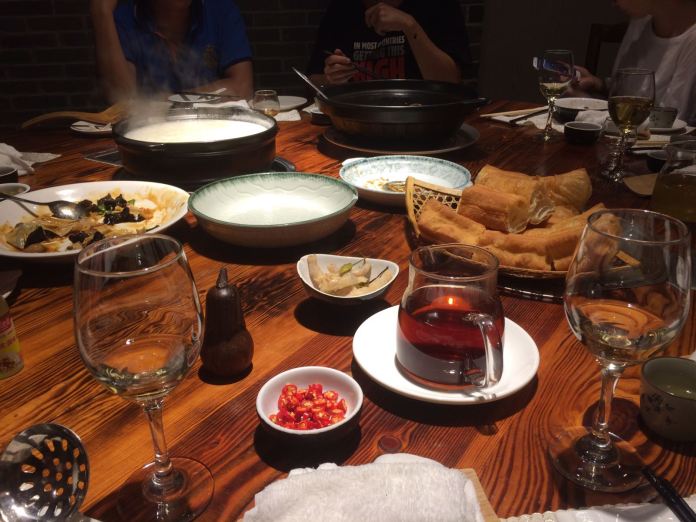This was my last full day in Japan so I woke up early and headed to the Arashiyama Bamboo Grove. Walking the path through the center of the grove gives a sense of otherness, even with the other visitors surrounding you. For me at least, it was so different than anything I had seen and experienced. Although I do recommend going in the early morning or evening to avoid most of the crowds.
My next stop was the Ryoan-ji Temple and the rock garden there. This temple is a Zen Buddhist temple. The Ryōan-ji garden is considered one of the finest surviving examples of kare-sansui (a specific type of Japanese Zen gardening) There are 15 stones in the garden placed very specifically and surrounded by pebbles that are raked every day by the monks.
The garden is meant to be viewed from a seated position on the veranda of the hōjō, the residence of the abbot of the monastery and the stones are placed so that the entire composition cannot be seen at once from the veranda. They are also arranged so that when looking at the garden from any angle (other than from above) only fourteen of the boulders are visible at one time. It is traditionally said that only through attaining enlightenment would one be able to view the fifteenth boulder.
Here is where I should probably interject, I have never been a very Zen person. While I strive for that kind of inner peace I’m instead more of the anxious never still mind kind of person. And I always figured that I could never reach that kind of calm solitude. But honestly, Japan gave me a different outlook. I went to this temple with its famous rock garden and I really didn’t expect much. I mean a rock garden is essentially an open space with a few stones and the sand is all raked in a certain direction and you just sit there are contemplate things… But actually once I got there I kinda got it. Like no I definitely did not suddenly become Zen, but I understood the draw of sitting and just existing for a while. And this is a feeling that I experienced many times during my travel in Kyoto.
After the rock garden I traveled to Kinkaku-ji Temple also known as the Golden Pavilion. This is another Zen Buddhism temple. It was originally built as a retirement villa for a shogun and then turned into a temple after his death. The Pavilion is coated in gold leaf and houses Buddha’s Ashes. It has also gone through many rebuildings after being burned down multiple times over the years. The Pavilion is surrounded by beautiful gardens and a pond. As with all the temples I realized, every aspect is purposeful and done following various Zen guidelines.
My next stop was the Kyoto Imperial Palace. This was the ruling palace for the Emperor of Japan until the Meiji Restoration when the capital was moved to Tokyo. Although important ceremonies, like the enthronement of new emperors still took place at this palace. As someone who has traveled Europe I have seen a fair number of palaces, but this one was so different than others I have seen. Instead of the large sprawling building and courtyards I had come to expect it is a large walled area filled with multiple separate buildings surrounded by paths and gardens. If I was an emperor this is exactly the type of palace I would like, and it fit perfectly with the Zen design I’ve now connected with Japan. Although I have to say it’s a good thing the Emperor had a chair to be carried around in because moving between the spaced out buildings all day could get rather tiring.
My final stop for the day was Ginkaku-ji Temple also known as the Silver Pavilion. This temple was modeled after the Kinkaku-ji (built by the commissioner’s grandfather) and was also planned as a retirement villa for the shogun. It gets is nickname due to the original plan to cover the pavilion in silver leaf which was not carried out because of the Onin War and then the shogun died before it could be done. This temple features an amazing garden created out of the wooded/mountain back drop and the Zen sand structures (one famously known to represent Mt. Fuji).






































































